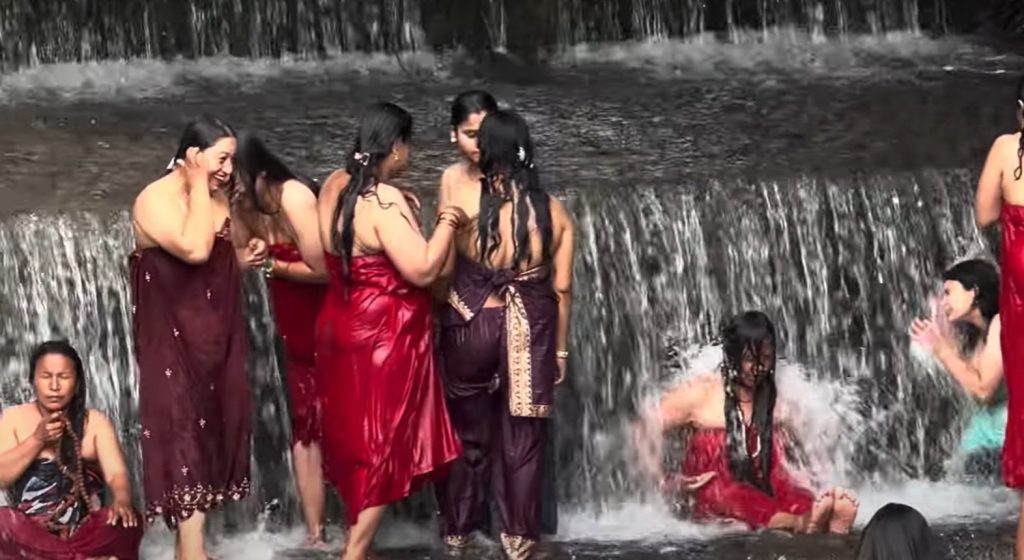
Today marks the beginning of the second journey for the devotees who are keeping the rigorous month-long Madhav Narayan fast in Shalinadi in Sankhu.
The Madhav Narayan devotees journey from Sankhu to Panauti, where they spend the night, as part of a yearly ceremony that starts on the third day of the waxing moon in the month of Magh. Before walking around the historic town of Panauti, they worship Lord Madhav Narayan and take a sacred bath at Triveni Ghat.
The devotees will leave Sankhu on Saturday morning, passing through Bhaktapur and Banepa before arriving in Panauti, according to Vikasman Singh, Chairman of the Sri Madhav Narayan Swasthani Brata and Shalinadi Improvement Committee.
Following their arrival at Panauti on Saturday night, the devotees will worship Lord Madhav Narayan in a special ceremony on Sunday morning after taking a ceremonial bath at Triveni Ghat. After these rites are over, they will go about Panauti and then go to Bhoku Si, which is between Banepa and Nala, for lunch. The devotees will return to Sankhu after the lunch. In Sankhu, the devotees will also celebrate Lagala Saptami and Shree Panchami.
Drona Navami, the ninth day of the waxing moon, is traditionally celebrated by serving the devotees a special rice pudding known as “Tasmii.” On the eleventh day of the waxing moon, the third pilgrimage is made to Changu Narayan. The devotees spend the night at Changu and then head back to Sankhu the next day.
In contrast to the second pilgrimage, the pilgrims must return to Sankhu for lunch on this trip. This trek has been considered a “pilgrimage to foreign lands” since ancient times, according to Prakashman Shrestha Sakwa, a local scholar of Sankhu’s religious and cultural traditions.
A journey from Shalinadi to Bajrayogini, Pashupati, and Sheshnarayan Temple in Dakshinkali Municipality had already been finished by the devotees on the fourteenth day of the waning moon in Magh. The first pilgrimage lasts for three days and two nights, and according to an old custom, the second and third pilgrimages last for two days and one night each.
The fasting rite requires pilgrims to bring beaten rice, oranges, molasses, clarified butter, sugar, lapsi (Nepali hog plum), red radish, and ginger. Jayaram Shrestha, a Sankhu native, claims that fasting devotees can have boiling milk that is given to them by close family members who also fast.
Volunteers accompany the pilgrimage and help the devotees. The volunteers offer assistance during the trip, while the devotees travel barefoot in accordance with custom.











